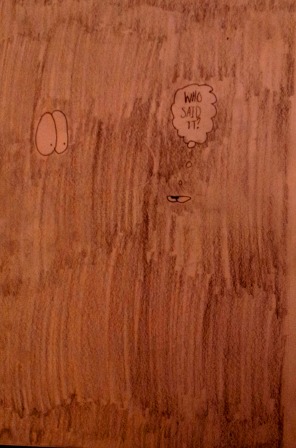NEW YORK LITIGATION: WHY THE RULES COUNT
 When someone sues you or your company, you have to pick a lawyer who knows the rules of the game. The rules are intricate and, even two situations that look similar, are not always governed by the same rules. When even judges can apply the wrong rule, it is better to know what should have happened, so you can decide what your options are. That is what a good attorney does: she explains what your options are, and your realistic chances of success with each, so you can best protect your interests.
When someone sues you or your company, you have to pick a lawyer who knows the rules of the game. The rules are intricate and, even two situations that look similar, are not always governed by the same rules. When even judges can apply the wrong rule, it is better to know what should have happened, so you can decide what your options are. That is what a good attorney does: she explains what your options are, and your realistic chances of success with each, so you can best protect your interests.
A recent appellate decision makes this point. 1259 Lincoln Place Corp. v Bank of N.Y., 2018 NY Slip Op 02177, Appellate Division, Second Department, was decided on March 28, 2018. It really is a fight over a lot of money, disguised as an attempt to quiet title pursuant to RPAPL Art. 15; and the fight ultimately turned on which set of rules should be used to decide the dispute. The trial court selected one, and the Appellate Division determined that another should have been used.
The facts are straightforward: A bank took a mortgage on a property in Brooklyn. The mortgage secured a large loan. The borrower evidently defaulted so the bank attempted to foreclose and filed a notice of pendency against the property. The problem was, the borrower apparently did not own the property; even worse, the Bank already paid approximately $200,000 in property taxes on it. The titled owner wanted to keep its property, so it sued the Bank to quiet title; i.e., it asked the court to declare it was the rightful owner of the property and to cancel the notice of pendency. The titled owner made a summary judgement motion, which means it asked the court to declare it the rightful owner of the property without a trial, just based on the motion papers alone. Faced with losing the case outright, the Bank came up with a backup plan: It tried to assert a new claim that it should have an equitable lien; i.e., it paid out money to maintain the property (the real estate taxes), which the rightful owner received the benefit of, so it is only fair that the Bank should get the money back. The problem was that it needed the court’s permission, so it made a cross-motion to assert a counterclaim for an equitable lien to at least recover some of the money it paid.
 New York Business Lawyer Blog
New York Business Lawyer Blog


 It is not unusual for a Plaintiff to sue more than one defendant. It happens all of the time in New York.
It is not unusual for a Plaintiff to sue more than one defendant. It happens all of the time in New York.  How to
How to  Sometimes you learn something new from unexpected places. Sometimes you have to challenge your assumptions if you want to have any hope of solving an otherwise intractable problem. Sometimes, just because common knowledge is widely accepted, does not mean that it should be. A recent appeal I was working on made this clear.
Sometimes you learn something new from unexpected places. Sometimes you have to challenge your assumptions if you want to have any hope of solving an otherwise intractable problem. Sometimes, just because common knowledge is widely accepted, does not mean that it should be. A recent appeal I was working on made this clear. Vacating a default judgement in New York, as we have
Vacating a default judgement in New York, as we have  Summary judgement motions in New York are strange things. When used in the right way they can bring long, arduous litigation to an end merely by submitting papers to the court, without the need to call messy witnesses, susceptible to skillful cross-examination, to trial to be judged by a jury. They can be a lawyer’s best friend, or worst enemy. A lot depends upon the approach a lawyer takes towards them. They can take the place of a trial but how you approach them should be much like a trial. The actual motion depends upon the facts and circumstances of the particular case. There is an acronym that sums it up, one I often say to myself: KISS (as in: keep it simple, stupid). There’s also an apt idiom: break it down. Like a trial, it’s important to stay focused and to keep the decision makers focused on what you believe is important; because you have to give them a reason to rule in your client’s favor.
Summary judgement motions in New York are strange things. When used in the right way they can bring long, arduous litigation to an end merely by submitting papers to the court, without the need to call messy witnesses, susceptible to skillful cross-examination, to trial to be judged by a jury. They can be a lawyer’s best friend, or worst enemy. A lot depends upon the approach a lawyer takes towards them. They can take the place of a trial but how you approach them should be much like a trial. The actual motion depends upon the facts and circumstances of the particular case. There is an acronym that sums it up, one I often say to myself: KISS (as in: keep it simple, stupid). There’s also an apt idiom: break it down. Like a trial, it’s important to stay focused and to keep the decision makers focused on what you believe is important; because you have to give them a reason to rule in your client’s favor.  It is not always easy to obtain a default judgement in New York. It is harder, still, to vacate one, especially when the defaulting party has a history of missing deadlines or otherwise not doing what the court wants. A recent case from the Third Department,
It is not always easy to obtain a default judgement in New York. It is harder, still, to vacate one, especially when the defaulting party has a history of missing deadlines or otherwise not doing what the court wants. A recent case from the Third Department,